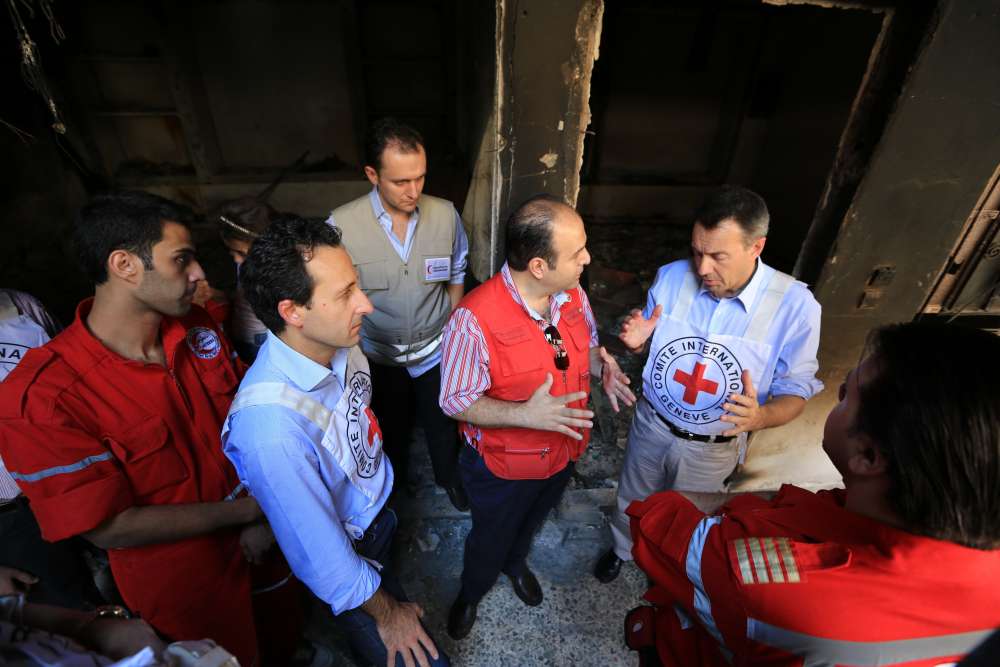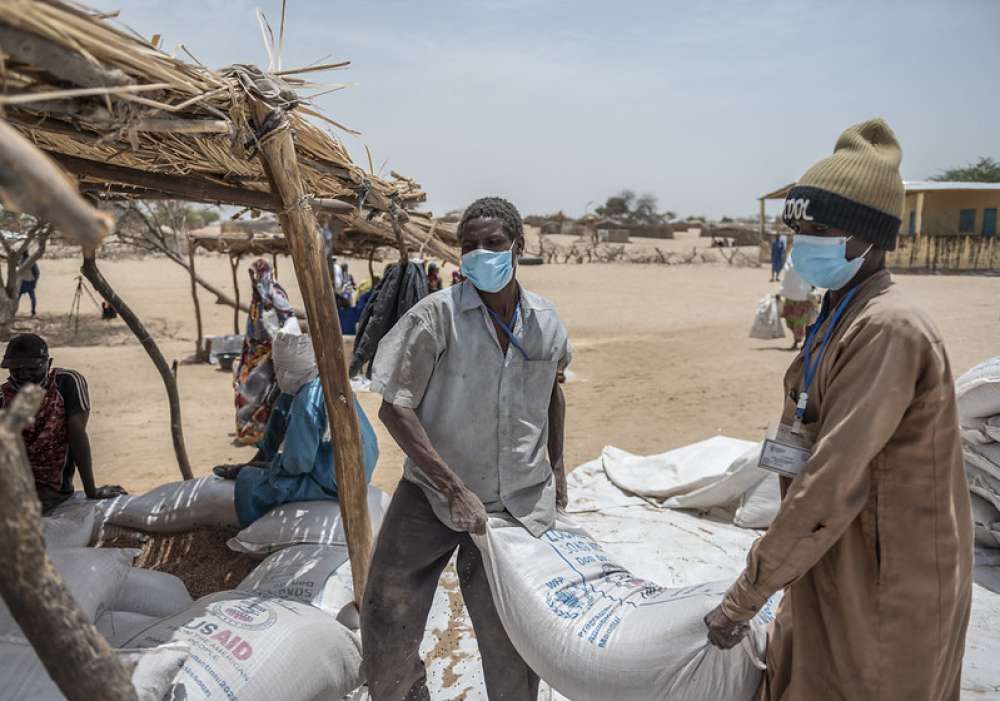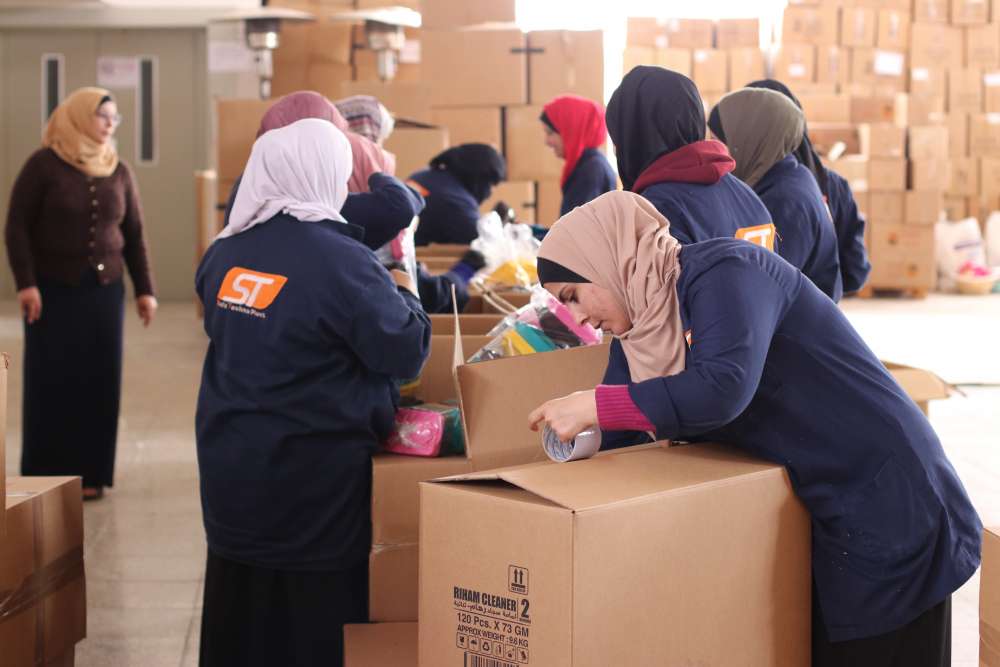Innovating for Access: The Role of Technology in Monitoring Aid in Highly Insecure Environments

Operating in insecure environments is one of the more critical tests for the humanitarian community. Access constraints, uncertainty, attacks and aid diversion make these unlikely settings for innovation. Yet several new approaches come from highly insecure environments. In these settings, technologies like mobile phones, radios, Internet platforms and GPS trackers are sometimes the only way to send and receive vital information, or track the movement of goods. This article draws on the findings of a three-year research programme, Secure Access in Volatile Environments (SAVE), by Humanitarian Outcomes and the Global Public Policy Institute (GPPi), funded by the UK Department for International Development (DFID). In close collaboration with aid agencies in Afghanistan, Somalia, South Sudan and Syria, the research examines access, quality and accountability in highly insecure settings, including assessing the technologies aid actors use for monitoring aid in hard-to-reach areas.
Technology for M&E in Insecure Settings
Access restrictions, high costs, poor infrastructure and high levels of uncertainty require tools that can function without constant electricity supply, across large distances and without advanced computing skills. The research identified four technology types that meet these criteria: handheld devices for digital data collection, mobile phone-based feedback mechanisms, remote sensing with satellites or delivery tracking, and broadcasting with radios and other forms of media.
Digital Data Entry and Electronic Databases
Digital data entry applications use smartphones or tablet computers to enter survey responses or other information. Data can be transmitted via an internet or direct connection to a central database, which often has automatic analysis functions. These applications make data entry and processing more efficient and offer greater opportunities to supervise and support enumerators remotely (since data can be time-and geo-stamped and photos and audio recordings can be added as data). Digital data entry technologies require physical access for enumerators to enable their use.
Experience with this technology is growing quickly. In South Central Somalia, for example, one INGO replaced all its paper-based monitoring over the last three years after a headquarter decision to support data collection software. Each field office now has five basic smartphones that cost around $100 each, which enumerators collect before going on assignment. As they enter survey responses in the field, data is immediately sent to a central database via a mobile data connection. The INGO found that digital data entry not only improved data quality, but also decreased the time needed to administer surveys by more than half. The fact that surveys record place and time information created strong incentives not to enter false responses.
Organisations also encountered problems. For enumerators, the restrictive format of software-based surveys and reporting platforms was sometimes frustrating or inconvenient, and the answer boxes on small smartphone screens were not easy to use. Where reception was bad, enumerators could wait for half an hour for the GPS-stamp before they could ask the respondent the next question. One interviewee in Somalia reported losing sleep at night staying up to charge two dozen touchpads from only one plug. In several areas, armed groups rejected the use of electronic devices.
Phone-based Feedback and Survey Mechanisms
Aid organisations have developed several ways to gather beneficiary feedback or survey data remotely using cell phones. These include hotlines, verification calls, phone-based surveys and bottom-up reporting. In Somalia, one organisation set up an SMS-based feedback hotline, where beneficiaries can submit complaints, praise or comments at any time. The messages are reviewed and (unless they contain sensitive information) recorded on a publicly viewable online map. Anyone can visit the site to see where feedback is positive or critical, and aid staff can follow up directly with individual and bulk requests.
Another group set up a call centre for individuals who agreed to provide information about food security indicators, such as crop prices. In short interviews, aid staff quickly collect data points and enter these directly into a centralised database. A large number of such interviews have been completed, including individuals from areas that the organisation was previously not able to reach. In Syria, where mobile network coverage has been severely damaged, aid organisations are increasingly using the online messaging platform WhatsApp to inform and communicate with their constituents.
Communities consulted for this research see phone-based feedback mechanisms as important complements to other channels, especially where physical access of staff is highly restricted. However, introduction and maintenance is costly and uptake can be limited. Another concern is the risk of multiple call systems from different organisations confusing or simply annoying people.
Remote Sensing and Aerial Imagery With Satellites, Sensors and UAVs
When access is highly restricted, aid agencies have turned to aerial imagery and geospatial analysis to capture information. This data can provide valuable insights on infrastructure and shelter, population movements, vehicle positions and the effects of disasters. Taken repeatedly over time, imagery can also help assess project outcomes. Remote sensing also includes taking images with UAVs, radar technologies, sensors or barcode scanners that utilise GPS coordinates to track the location of goods, deliveries or people. Remote sensing or earth observation information is often visualised on maps or triangulated with other data sets.
A number of projects have been undertaken in volatile settings that suggest possible M&E applications. In Syria, for example, aid organisations analysed satellite images to help monitor the conflict and key events causing displacement or other impacts on the population. A team of analysts used commercial satellite imagery collected over time to document damage to and the destruction of critical infrastructure, including markets, hospitals and schools. The analysis also enabled them to observe new structures, including the growth and evolution of IDP settlements and likely burial sites.
In Somalia, aid organisations used satellite images to assess progress on infrastructure and agricultural projects. The analysis showed, for example, changes in charcoal production, provided rainfall estimates and enabled the identification of different livelihood zones. Another project in Somalia made use of ‘crowdsourcing’. Hundreds of volunteers around the world worked with satellite images to tag shelter structures based on their shape, colour, tone and clustering. This created a detailed map of long-term and temporary shelters in the Afgooye corridor.
These are some of the most innovative technical tools for M&E in insecure settings, and not surprisingly their use poses some of the greatest risks. Although these technologies are ready to use, barriers include the high price of satellite imagery, the fact that many aid interventions do not create physically visible outcomes and the negative stigma of cheaper UAV alternatives (UAVs or other remote sensing technologies can be associated with spying and military attacks. Using them against the will of local authorities or communities can erode trust and put operations and staff at risk). In some instances, geo-spatial information can cause more harm than good. Records of the location of highly vulnerable or persecuted populations not only helps aid organisations, but can risk revealing these same locations to persecutors or other actors with harmful intentions.
Using Radios and Other Media to Broadcast Information
Worldwide, radio remains the most popular technology for receiving news and updates, especially in resource-constrained contexts. In insecure environments, it is one of the most reliable ways to reach communities. Broadcasts can be used to share important announcements or explain aid efforts and feedback mechanisms. Radio programming can also be used for active engagement, involving or supporting communities in creating their own shows and stations.
Although as a one-way communication tool radio has not received much attention in the monitoring of humanitarian programmes, a number of projects have shown that radio is not only easy to use, but can complement feedback mechanisms and generate input from affected people. In particular, radio can be used to inform communities about humanitarian programming, such as assessments, targeting strategies or distribution dates and locations, linking to accountability e orts and increasing community engagement and feedback. Radio can be used to announce and explain how feedback mechanisms work to increase usage, and interactive radio formats can be used to prompt information from communities. Technically, aid actors also have different options: using national broadcasts for urgent or regular announcements; contributing humanitarian shows to existing radio stations; or setting up small new radio stations for local humanitarian information, or where no station exists.
In South Sudan, one aid organisation used a localised USB radio to inform people at protection of civilian sites about planned programmes, enabling communities to provide more active feedback. Together with community members, the organisation recorded daily shows aired at select locations at the site. In Somalia, ‘Radio Ergo’, a locally run Somali-language station, streams every day from 3pm to 4pm on shortwave radio in order to reach people in remote areas who are not served by FM radio. Some local FM stations also rebroadcast the show and it is available on the station’s website. The show is based on local reporting gathered by a network of correspondents. Themes include health, education, protection, agriculture and livestock and gender.
Mitigating the Risks
Using innovative technological approaches to M&E in highly insecure settings inevitably involves risks, and while there is a natural tendency to revert back to ‘low-tech or no-tech’ in these environments, the research suggests a range of mitigation strategies should first be considered. Recommendations and measures depend on the technology, objective and context, but there are a few broad measures, which, while not necessarily comprehensive, are a first offering which can be further refined with practitioners. They include:
- Study the context before choosing tools: understand who influences and spreads information and can impact it.
- Involve all users actively: work with users’ representatives when inventing, designing and testing tools. Focus groups or interviews and, as much as possible, collaboration all help ensure that technologies are usable and appropriate, including handling, pricing and language.
- Establish informed consent practices: agree on mechanisms and standards by which to explain the risks involved with handling survey responses or phone requests digitally. Do this well before disaster hits.
- Provide back-ups and alternatives: have analogue alternatives in place to turn to when the new tool does not work. Ensure that every online function has an offline option. And carry extra batteries.
- Use security-conscious, free and open source software: use only those tools that independent security experts can review. Such free and open source software options exist for most relevant applications.
- Minimise and limit data: collect only on a ‘need to know’ basis. Similarly, define access levels clearly. Who needs to see individual records and where do aggregate numbers suffice?
- Invest in building acceptance: plan training and meetings with local staff, authorities and community members. Explain what you are using and let them see and perhaps test the tool themselves.
- Pool funds and risk: collaborate with other aid actors in the area. Share the investment in tools and seek agreed mechanisms for sharing them and the data.
- Apply humanitarian principles to technology: consider issues such as how to maintain independence when working with private sector companies. Are biases towards those willing and able to use phones conflicting with universality?
…
This commentary was originally published by the Humanitarian Practice Network on April 25, 2016.







